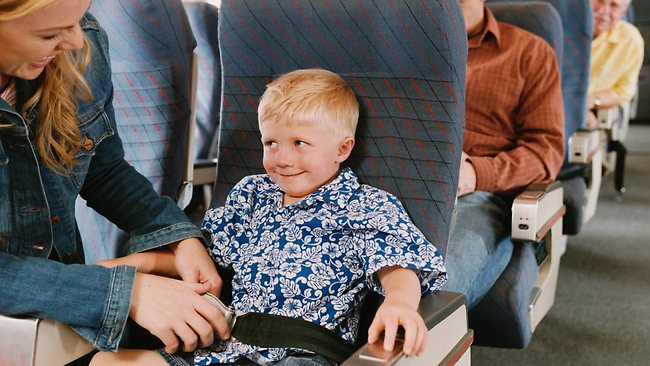News and Notes from The Johnson Center
A Smooth Trip from Takeoff to Landing
JCCHD | Fri, October 31, 2014 | [Autism Treatment][Community]Planning a vacation? Whether you are traveling by plane, cruise ship, or car, the key to smooth travel is in the planning.
Flying is often a brand new experience for children and may be more challenging for those with autism or developmental delays. Here are some steps to make travel as easy as possible.
Make a new experience as familiar as possible by making a picture book about your trip. Cut out photos of an airport, an airplane, and the flight crew. Paste in photos of the places or family members you will visit. Read this book in plenty of time to familiarize your child with the upcoming trip. Be sure to pack the book and have it ready for the ride to the airport.
Practice, practice, practice! A run-through of the trip preparations can help. Have your child help you pack some luggage and place it in the car trunk.
If you can do a run-through of the drive to the airport, or even take the shuttle bus, do so. You can also make the trip yourself and take photos along the way. Photograph the sea of cars in the parking lot, someone unpacking luggage from the car, and walking to the check-in area. If you are able to take your child with you, this is a chance to watch the airplanes land and take off and get acquainted with the new sounds of the airport. You can always record it on video to share at home.
Create a “Bon Voyage” bag. Pack your child’s favorite electronics, toys, games, headphones, music, and stuffed animals. Are there things you can buy in duplicate such that you can leave a set at home? It is easy to leave favorite items in the chaos of getting off a plane.
Don’t assume the airline food will be appropriate for your child. Add travel-worthy snacks to your Bon Voyage bag. As a precaution, ask your physician to write a doctor’s note to show to security in case your food items are questioned (this goes for on-flight supplements and medications as well). Will you be able to buy more of your special foods/snacks at your destination for your flight home, or do you need to pack extra in your checked luggage?
When dressing for the travel day remember that belts, jackets, and shoes may need to be removed at the security station. Slip-on shoes and zippers rather than buttons may be helpful wardrobe choices.
Have a visual schedule with activities for each 20 minutes of in-flight time, broken up by mini snack breaks. Even wrapping old items in gift wrap can add a “newness” to activities. The visual schedule will give your child something to look forward to the entire flight.
Warn your child that the airport may be noisy and crowded and review the airport photo and security photos. Remind your child that everyone takes off their shoes and coats at this point. Alert security that your child has special needs so they can expedite the metal detector screening. You may want to consider carrying a printed handout or brochure about autism and information about common behaviors that security personnel may not be familiar with.
Let the flight attendant know you would like to use the early boarding time to get your child settled before the airplane gets crowded.

Once you are on the plane, let a flight attendant know your child has special needs and notify him or her of any sensory sensitivities that may need to be accommodated (sensitivity to light and keeping the window shades down helps). Let the attendant know what has worked on past flights for your child.
Make the flight team aware that there may be an agitated response to a stressful situation on the flight, what it looks like for your child, and what measures you will take to help calm him or her.
It may help to choose a window seat to help keep your child seated. Walking up and down the aisles at regular intervals may be helpful.
As your plane comes in for a landing, review your photo book of exciting places and people you will visit upon arrival.
Have a nice trip!
Resources:
http://www.tsa.gov/traveler-information/autism-or-intellectual-disabilities
http://www.tsa.gov/traveler-information/travelers-disabilities-and-medical-conditions
http://www.phl.org/passengerinfo/Accessibility/Documents/SocialStories.pdf
http://www.tulsaairports.com/wp-content/uploads/2014/04/TUL-Social-Story.pdf
http://www.huffingtonpost.com/suzanne-robitaille/why-jetblue-started-an-au_b_3977300.html



